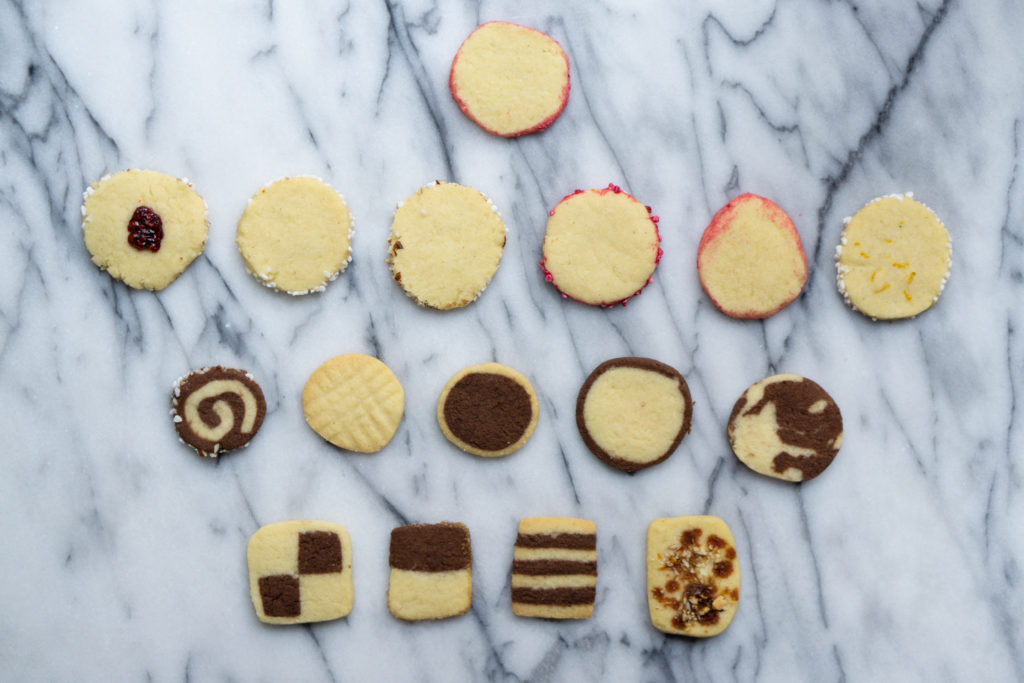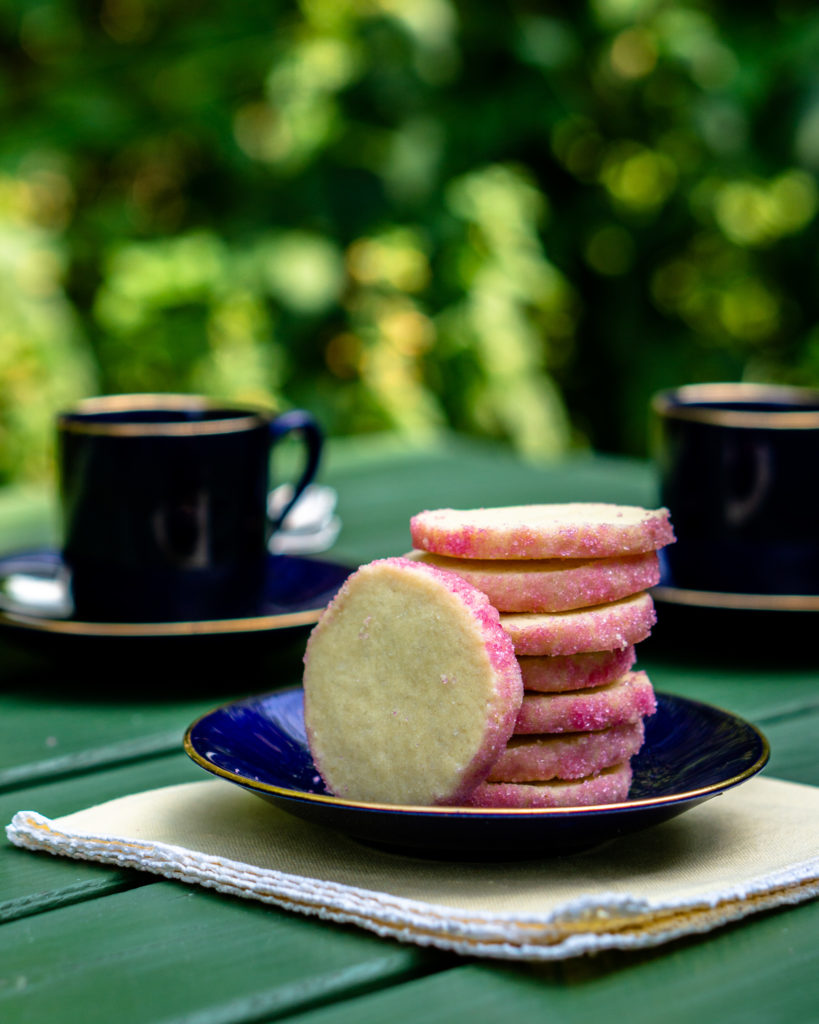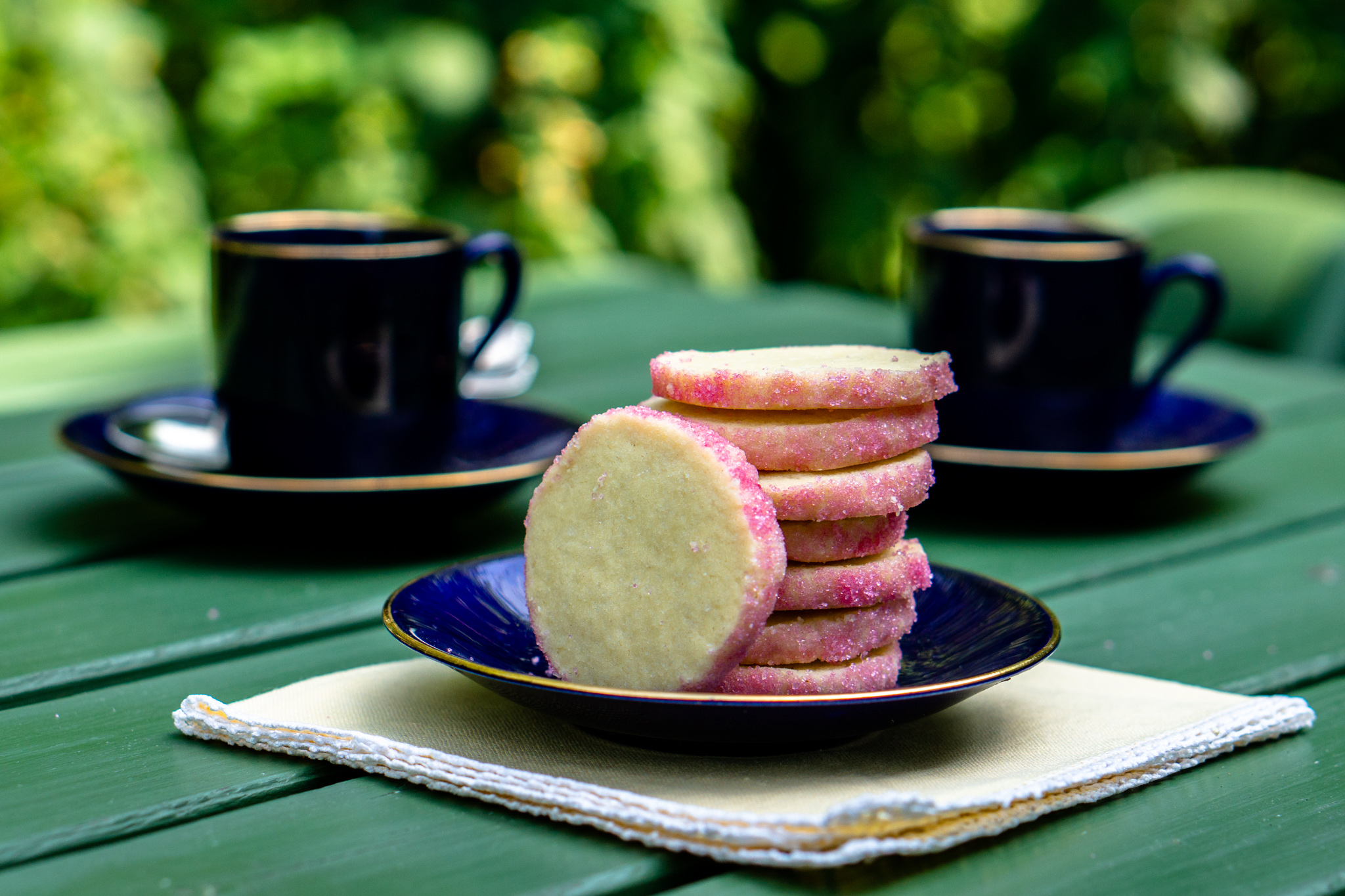My great grandmother Hedvig died many decades before I was born. But, she still claims a faint presence in my life through the worn, stained recipe book filled with neat rows of longhand that has made its way to me. In this treasure, there are no less than three recipes for brysselkex.
That should tell you something of the popularity of this Swedish shortbread cookie.
How to spot a brysselkex in the wild
Brysselkex, or Brussels cookies, has had a mandatory place on the cookie trays. Luckily, you’ll spot them without any trouble because of their main feature: a fancy coating of pink sugar. It even made my cousin’s sons exclaim: ”Oh, brysselkex!” at the sight of my grandmother’s overflowing tray, at an age where they barely were expected to form full sentences.
But, digging through books on baking from the early 20th century, it turns out that the definitive look of brysselkex hasn’t always been as straightforward.

“Hm, is this really a brysselkex?”
All in all, I found 15 deviant versions referred to as brysselkex. With chocolate. With jam. With almond nougat. Lemon peel. Stripes. There was no end to the heresy.
An informal survey among friends showed that most were ready to accept the pear-shaped, pink-sugared version from 1924, but that was the limit. So, there you have it. In 2019, a classic brysselkex should feature pink sugar, and that’s that.
And pink sugar seems to have become established early on. The earliest recipe I’ve found is from the 1924 tome Svensk Konditorbok. It shows brysselkex as a shortcrust cookie rolled in “light red crystal sugar.”
The brysselkex recipe from Svensk Konditorbok uses icing sugar instead of granulated sugar in the dough. This dough was surprisingly smooth to form into logs without crumbling. But unfortunately, the end result turned dry as dust—despite accurate measures in grams. And regardless of whether this could be due to differences in flour or the use of icing sugar, the texture was lacking.
After taste-testing the other brysselkex, the two favorites were the cookie with almond nougat from Svensk Konditorbok and the jam version, rolled in pearl sugar and chopped almonds, from the classic baking book Sju sorters kakor. Worth making, but I might call them something else…

Brysselkex — Swedish Brussels cookies
In the end, the classic 1-2-3 shortcrust recipe is difficult to beat. 100 grams sugar, 200 grams butter, 300 grams flour. This was also the proportions in one of my great grandmother’s recipes. The classic version features hot pink sugar, but you can vary the recipe by rolling the cookies in pearl sugar and chopped nuts. Makes ca 50 cookies
100 g (1/2 cup) granulated sugar
200 g (7/8 cup) butter, room temperature
300 g (2 1/3 cup) flour
1/3 tsp vanilla powder
Granulated sugar and food colors
- Stir the butter, sugar, flour, and vanilla together until the ingredients turn into a dough.
- Mix granulated sugar with food colors. I tend to use mostly pink with a dash of red to get a hot pink shade for the classic color. Use whatever color you like or have at home (I won’t judge).
- Divide the dough into two balls, and form the balls into logs, about 4-5 centimeters or 2 inches in diameter. To make the logs longer, press them out and then shape them so they become round. This prevents the logs from splitting at the core, which they easily do if you just roll them.
- Pour out the colored sugar on a cutting board or other clean, flat surface that isn’t sensitive to staining from the color, and roll each log in the sugar. If you choose pearl sugar or chopped almond instead of granulated sugar, you’ll need to brush the cookie log with a little bit of water or egg white to make them stick.
- Wrap the logs in cling film and place them in the fridge for two hours or more until they firm up. You can also freeze them and use them another day.
- When you’re ready to bake, pre-heat the oven to 175°C (350°F). Cut each cookie log into coins and place on lined baking sheets. Bake for about 10 minutes.
Suggestions
The cookie’s neutral taste invites to flavor experiments. In the past, I’ve added ground Earl Grey tea, citrus peel, or rosewater to the dough or flavored the sugar.



0 Comments